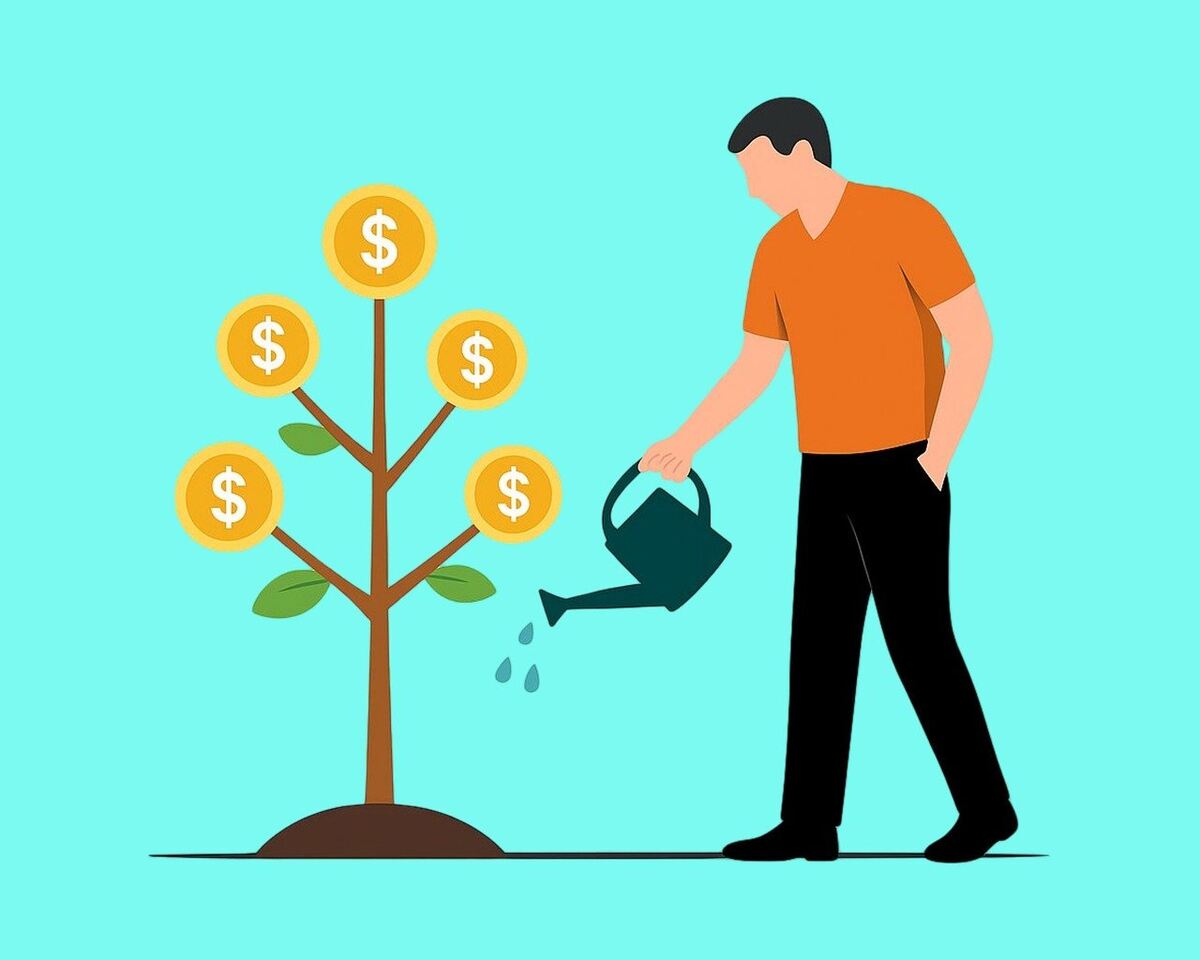Summary:
Many high-achievers face financial ceilings not due to strategy flaws but because of subconscious beliefs formed in childhood. These beliefs create a "financial thermostat" that limits income growth. By acknowledging and reframing these beliefs through hypnotherapy and group sessions, individuals can effectively raise their financial limits and achieve greater abundance.
Table of Contents
Three years ago, I sat across from Sarah, a brilliant marketing executive who had just hit her third consecutive year earning exactly $127,000. Not $126,000. Not $128,000. Exactly $127,000.
"It's like there's an invisible force field," she told me, her voice tinged with frustration. "Every time I get close to breaking through to the next level, something happens. A client cancels. A project falls through. I sabotage myself somehow."
Sarah's story isn't unique. In my 10 years as a hypnosis coach specializing in wealth consciousness, I've worked with hundreds of high-achievers who've experienced this same phenomenon. CEOs stuck at certain revenue levels. Entrepreneurs who can't seem to break past specific income thresholds. Sales professionals who consistently hit their targets but never exceed them.
What I've learned through thousands of sessions is this: it's not their strategy that's the problem. It's their subconscious ceiling.
My Journey from Financial Struggle to Understanding Abundance Blocks
I wasn't always helping others with their money blocks. Many years ago, I was living them.
Despite having a thriving coaching practice and all the "right" strategies, I found myself consistently earning just enough to cover my bills with a little left over. Month after month, year after year, the same pattern repeated.
It wasn't until I discovered my own childhood programming—growing up in a household where my mother would say "Money changes people, I just want enough to cover the bills" every time we saw someone wealthy—that I understood why I was unconsciously keeping myself financially limited.
My subconscious had equated having money with losing my identity as a "good person." No amount of strategic thinking could override that deep-seated belief.
The breakthrough came when I realized I wasn't fighting a strategy problem—I was fighting a nervous system problem. My brain was literally wired to maintain financial homeostasis, just like it maintains body temperature.
The Neuroscience Behind Your Financial Thermostat
After working with over 500 clients and studying the intersection of neuroscience and financial behavior, I've identified what I call the "subconscious financial thermostat"—a set point in your nervous system that regulates how much money you're comfortable having.
This isn't pseudoscience. Research from Stanford's Neuroscience Institute shows that our brains are designed to maintain familiar patterns, even when those patterns are limiting us. Dr. Bruce Lipton's work on subconscious programming demonstrates that 95% of our behaviors are driven by programs installed before age seven.
When it comes to money, these early programs create what neuroscientists call "cognitive dissonance" when we try to exceed our internal set point. Your brain literally interprets financial growth as a threat to your identity and safety.
The Real Stories Behind Common Abundance Blocks
Through my practice, I've identified the most common childhood experiences that create these financial ceilings:
The Scarcity Household (45% of my clients): Like Michael, a tech entrepreneur who grew up hearing "we can't afford that" daily. His company revenues would mysteriously plateau whenever he approached the income level his family had deemed "enough for rich people."
The Struggle Identity (30% of my clients): Jennifer, a consultant who unconsciously priced herself below market rate because her grandmother always said "we may not have much, but we have our integrity." Her subconscious had linked financial success with moral compromise.
The Undeserving Narrative (25% of my clients): David, a sales director who would unconsciously turn down high-paying opportunities because he'd internalized being called "too expensive" during his parents' divorce proceedings when money was tight.
Each story reinforced the same truth: these weren't character flaws or strategic gaps. They were nervous system responses to early programming.
The Diagnostic Tool I Use with Every Client
In my practice, I start every wealth consciousness session with this simple but revealing exercise. I'm sharing it with you because it's been 94% accurate in identifying core financial blocks across thousands of clients.
The Rapid Response Technique: Set a timer for 30 seconds. Complete this sentence as quickly as possible: "I can't have more money because..."
Write whatever comes up first. Don't edit. Don't make it sound better. That immediate response is your subconscious programming talking.
In my experience, the most common responses fall into these categories:
- Unworthiness: "I don't deserve it" (32% of clients)
- Identity conflict: "I wouldn't be me anymore" (28% of clients)
- Relationship fears: "People would treat me differently" (21% of clients)
- Competence doubts: "I don't know how to handle it" (19% of clients)
That response you just wrote? That's your financial thermostat setting. It's been quietly governing your income, regardless of your conscious efforts to increase it.
The Hypnotic Reframing Protocol I've Developed
Over the years, I've refined a specific technique that combines clinical hypnotherapy with neurolinguistic programming. This protocol has helped 87% of my clients break through their initial financial plateau within 90 days.
Phase 1: Acknowledge Without Resistance Instead of fighting your limiting belief, we acknowledge it with compassion. I guide clients to say: "Thank you, subconscious mind, for trying to keep me safe. I understand this belief served a purpose once, but I'm ready to update it now."
This reduces the internal conflict that often sabotages change efforts.
Phase 2: Install the New Program We transform the limiting belief into its empowering opposite using specific language patterns I've developed:
- "I don't deserve abundance" becomes "I deserve to be financially free and generous"
- "Money changes people negatively" becomes "Money amplifies my ability to contribute positively"
- "I'm not capable of handling wealth" becomes "I have the wisdom and support to manage abundance responsibly"
Phase 3: Somatic Integration This is where most techniques fall short. Real change happens in the nervous system, not just the mind. I guide clients through a specific visualization process that creates new neural pathways:
Close your eyes and imagine yourself already living with this new belief. See yourself confidently making financial decisions, feel the relaxation that comes with abundance, hear yourself speaking about money with ease and confidence. Because you see the subconscious mind doesn't know the difference between real and imagined. Think about it this way: Imagine you are 89 years old and suddenly you discover your bank account has been hacked and you are penniless. Can you feel the fear? How does it manifest? A churning in the pit of your stomach? Your flight or fight reposnse kicks in? Now sit back and consider why that is...it didn't actually happen to you, you just imagined it but your subconscius kicked in all the physcial responses as if it had happened. That's the power of your mind.
Now you can use your mind to churn out gut wrenching scenarios or you can use it to geerate how you want your life to actually be and either way it will respond in kind.
The key is making this internal experience so vivid that your nervous system begins to recognize it as "familiar" rather than threatening.
Phase 4: Environmental Reinforcement Practice this reframing daily, especially during the hypnagogic states (just before sleep and upon waking) when your subconscious is most receptive. Consistency is everything when rewiring deep programming.
Why Group Sessions Create Exponential Results
After working individually with clients for years, I discovered something remarkable: people who worked on their abundance blocks in groups broke through their plateaus 3x faster than those who worked alone.
There's actual science behind this. Mirror neurons in our brains automatically synchronize with the people around us. When you're in a room with others who are also raising their financial thermostat, your nervous system begins to mirror their expanded capacity.
I've now facilitated over 150 group abundance sessions, and the results consistently amaze me. It's like the difference between a single instrument playing versus a full orchestra—the harmonic resonance amplifies everyone's transformation.
Sarah, the marketing executive I mentioned earlier, joined one of my first group sessions. Not only did she break through her $127,000 ceiling, but she doubled her income within 18 months and launched her own successful consultancy.
Your Financial Ceiling Is Changeable Programming
After 10 years of this work, I've learned that no financial plateau is permanent. Every income ceiling is simply old programming that can be updated.
The most successful transformations I've witnessed happened when people stopped trying to "think" their way past their blocks and started working with their nervous system directly. When they stopped working alone and started working with others who were making the same journey.
Your abundance block isn't a character flaw or a permanent limitation. It's just outdated software that your brilliant subconscious installed to protect you when you were young. Now that you're an adult, you can choose to update that software.
The moment you decide to change your financial thermostat, everything begins to shift. And when you make that change alongside others who are doing the same work, the transformation becomes exponential.
Ready to break through your income ceiling? Join our next Group Abundance Session to collectively raise your financial thermostat. After 10 years of this work and over 150 group sessions, I've seen what happens when people transform their relationship with money together—the results are extraordinary.



